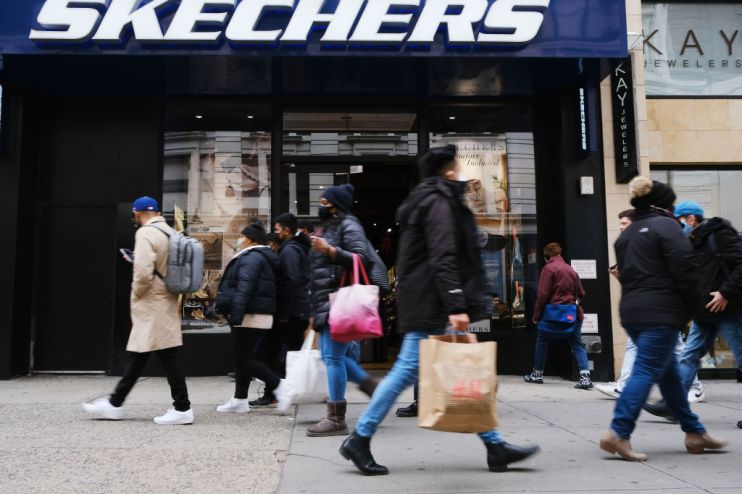US economy smashes Wall Street expectations as GDP accelerates at quickest pace since 1980s

The US economy is powering faster than Wall Street can keep up with as the recovery across the pond continues to gather momentum.
Stateside GDP growth came in at 6.9 per cent in the final three months of last year, the US Commerce Department said today.
Experts had been pencilling in a 5.5 per cent expansion.
Over the whole of 2021, the American economy expanded at the hottest rate since 1984, in a sign that the US is propelling the Western recovery from the Covid-19 crisis.
Wall Street toasted the news. The S&P 500 jumped 1.69 per cent, while the tech-heavy Nasdaq climbed 1.37 per cent.
The booming GDP print validates the US Federal Reserve’s swift hawkish tilt as the world’s most influential central bank swings its focus away from supporting the economy through the pandemic to clamping down on inflation.
The Fed’s committee of rate setters sent a strong signal to markets yesterday indicating it intends to hike interest rates at the central bank’s next meeting in March.
“The economy no longer needs sustained high levels of monetary policy support,” Fed Chair Jerome Powell said.
Inflation across the pond hit seven per cent in December, its fastest rate since the 1980s.
On these shores, the cost of living is running at a near 30-year high of 5.4 per cent and is expected to top seven per cent in April, prompting the Bank of England to launch a sharp tightening offensive this year.
Some experts think the Bank will hike interest rates as many as four times this year, starting at its meeting of rate setters next Thursday, taking borrowing costs to 1.25 per cent by the end of 2022.
Leaving borrowing costs at extremely low levels while economies are running hot runs the risk of pushing inflation to dangerously high levels.
In a further indication the mood music across the pond is upbeat, weekly jobless claims shrank 30,000 over the last week and beat analysts’ expectations.
The bumper GDP reading was driven by “a massive surge in inventories” as businesses sought to avoid being spiked by the supply chain crunch by boosting stock levels, Andrew Hunter, senior US economist at Capital Economics, said.
Experts said the sharp rise in inventory orders, which contributed 4.9 percentage points to total output growth, had artificially boosted the US economy in the final quarter of the year.
“Outside of inventories this was a fairly weak report” and suggests first quarter growth could be marred by the pull back in consumer confidence caused by the Omicron variant sweeping across the country, James Knightely, chief international economist at ING, said.